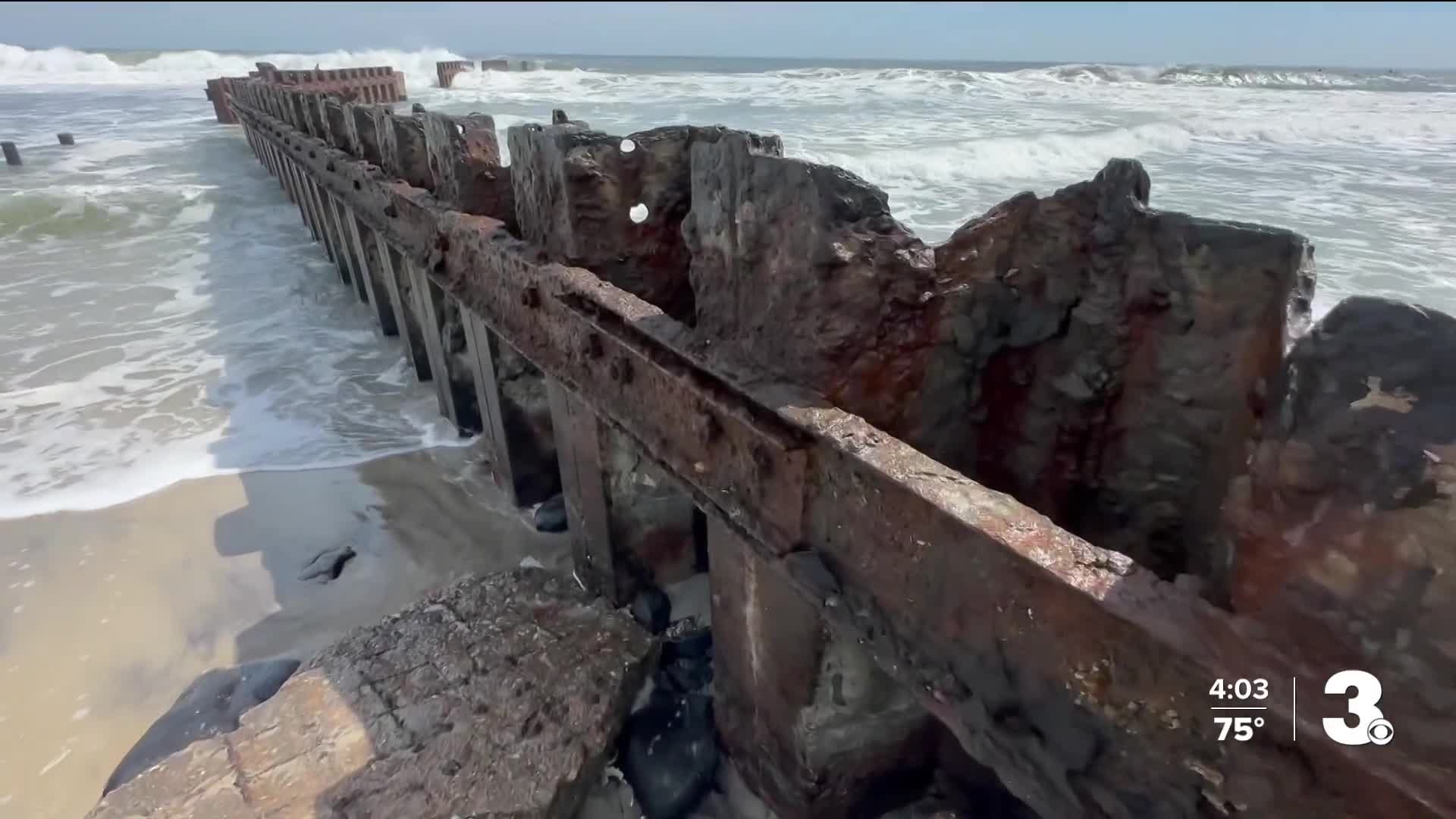OUTER BANKS, N.C. — Coastal communities like the Outer Banks are grappling with the realities of rapid erosion in areas of our community and how to address it with a push in Buxton for a rebuilding of the jetty system.
"In the area of Buxton, it's been eroding about half a mile per century for a fairly long period of time. So this is a location that's eroding very quickly, Rodanthe is the same," said Laura Moore, a professor of coastal geomorphology at the University of North Carolina at Chapel Hill.
Hatteras Island has seen a devastating reality — 21 houses have ended up in the ocean on the island since 2020, with nine of those losses happening just in the last week in Buxton and Rodanthe. These are the two major hot spots right here in our backyard experiencing rapid erosion.
"All of the houses and infrastructure were originally built outside of that envelope of storm impacts, or at least impacts from common storms. So the fact that houses are getting hit by storms now just reflects the facts that the shoreline has come to meet those houses or move behind them because of this long-term, ongoing erosion," said Brad Murray, a professor of coastal geomorphology and coastal processes at Duke University.
Watch related coverage: Massive cleanup continues in Buxton, worries persist about more collapses in coming days
North Carolina currently has a law against building hardened structures on the coast, with some exceptions, passed decades ago. That ban includes seawalls and jetties in most cases.
"Decades ago, North Carolina, in what was seen as a very forward-thinking approach, limited the construction of hard structures on the coastline. Given that our coastline is made up of barrier island landscapes, which necessarily need to be connected to the ocean directly, from the perspective of wanting to maintain these landscapes so that they persist over the long term, it's a very wise choice to have passed that ban so we don't have a coastline that is chock full of groins and sea walls," said Moore.
For the last year, the Buxton Civic Association has pushed for a repair to the jetty system in the area, which was built along the shoreline when the Navy occupied the formerly used defense site there decades ago.
Dare County has approved a repair to the first and most intact jetty in 2026, along with a beach nourishment project to help shore up the areas north where the houses, hotels and NC-12 sit.
Watch related: Amid home collapses in Buxton, a continued call for action
Murray and Moore both shared the cause and effect of a groin/jetty system.
"That can be effective to some degree, but as a consequence, you increase the erosion on the other side exactly as much. So again, maybe that's okay if what you need to protect is important enough, and what's on the other side, if it's okay that the shoreline moves landward faster than it would have otherwise," said Murray.
"Certainly, nourishment in conjunction with a groin will likely slow the erosion down for some period of time. However, the erosion rates are so high in this location that it will require an extremely large amount of sand in place at an extremely frequent interval in order to maintain the shoreline in a position that would prevent further loss of homes," said Moore. "And so might there be some temporary relief, perhaps, but we are going to continue to see the shoreline attempting to erode at rates that are likely to become even faster than what we've seen in the past.
Both researchers with decades of experience are sharing that there's no one-size-fits-all solution to rapid erosion on a barrier island like ours. But an active discussion of how we move forward will be key to the future of our neighborhoods.
"We unfortunately are being shown more and more strongly that we are fighting a battle that we may not win unless we really change our strategy and approach to it," said Moore. " If we really want these landscapes to remain so that we can coexist with them, we really have to find some way to adapt and change with them."





